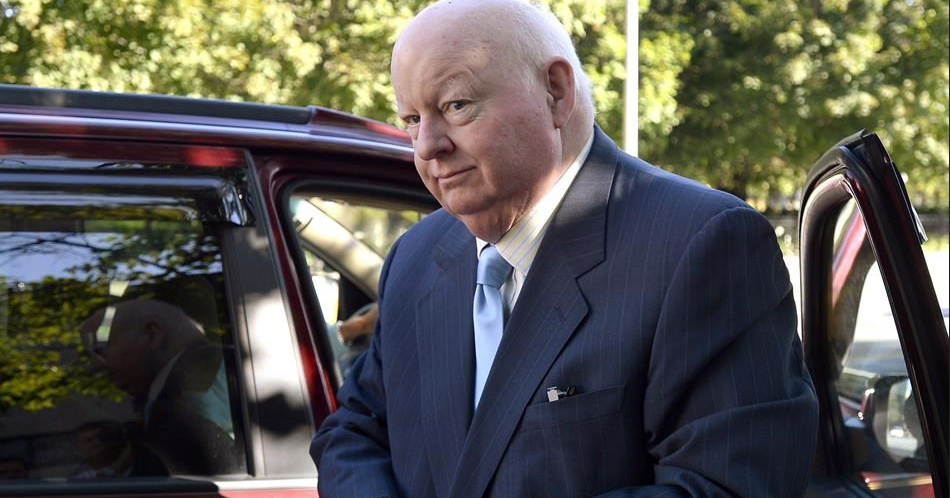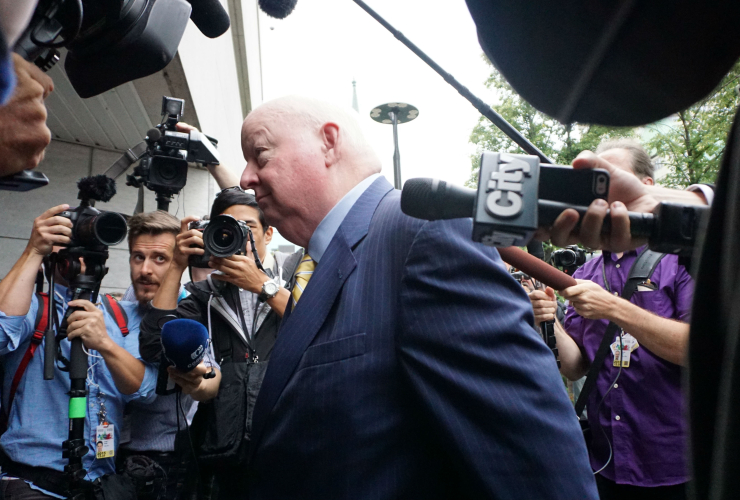OTTAWA — Upon quitting the Conservative caucus in the spring of 2013, Alberta MP Brent Rathgeber declared he no longer wanted to be treated like a "trained seal," parroting media talking points written for him by the Prime Minister's Office.
Two years later, the trial of his former caucus colleague Mike Duffy is shedding light on the inner workings of the powerful office that was the source of Rathgeber's main grievances.
The long arm of the PMO was even apparent Tuesday at the Ottawa courthouse, where the current director of issues management and campaign staffer Nick Koolsbergen watched from a courtroom overflow room as his predecessor Chris Woodcock testified.
The court has heard over the past two weeks from former key figures inside Stephen Harper's office, those unelected "masters" that Rathgeber said he didn't want to take orders from any longer.
Their testimony and emails entered into evidence show how senators were instructed on how to write their committee reports, how parliamentarians were advised on how to avoid or speak to the media, how Duffy — a former journalist — was given media lines and suggested scripts.
Even Harper's former lawyer inside the PMO was assigned to help negotiate what Duffy would say.
"I have added a number of changes, including a sentence that they might gag on, but which satisfies what the PM has asked for," Woodcock wrote to colleagues, after reporting he rewrote a Senate committee report.
Although the centralization and professionalization of federal government communications began under Pierre Trudeau in the 1970s, the "issues management" position is a relatively new one in Canadian politics, apparently having first been born inside the government of Liberal prime minister Paul Martin.
The director of issues management is in addition to the director of communications and the legion of other press secretaries, media monitors, and others who hold communications roles.
Woodcock has described how he would arrive at work at 4:30 a.m. to read media articles and watch recordings of the previous evening's newscasts.
The first meeting to discuss communications issues would happen at 7:30. Harper would be briefed later on potential headaches.
"Mainly my job was to spot trouble, and try to identify it and come up with a strategy for dealing with it," Woodcock said.
Duffy's defence lawyer Donald Bayne has been questioning Woodcock on the media messaging he drew up around Duffy's contentious living expenses in 2013, trying to establish that Duffy was being forced into positions by the powerful men in the PMO.
But Woodcock's testimony is also one of the first times that the thinking around communications and managing the news is being described to the public.
As with other modern democracies, communications now occupies as important a place inside the government as policy-making — every issue seen through the prism of how it will be marketed, how it will look, in the 24/7 news environment.
Communication on political issues is centralized inside the PMO, rather than having individual ministers or MPs' offices figure out how to deal with journalists. In 2006, for example, Harper put an end to the practice of ministers speaking to reporters after cabinet meetings.
Such centralized control took on notoriety inside the Labour government of UK prime minister Tony Blair, whose director of communications Alastair Campbell became the inspiration for TV characters and books.
In the case of Mike Duffy, his expenses had been a problem that needed to be managed. Woodcock and several other figures — including Harper's chief of staff — rolled up their sleeves on the communications plans.
Even though Duffy felt passionately he had not broken any Senate rules when claiming living expenses, the PMO did not want him to go "squirrelly" and plead his case in the media because it might hurt the overall brand of a prudent, ethical government.
"Oftentimes, when individuals are the subject of media allegations or public criticism, very often individuals in that situation feel lonely and isolated and plan unexpected or impromptu media availabilities," Woodcock said.
"My wish was to have no surprises and not to further feed a story that was already dominating the news headlines."
At one early point in February 2013, Duffy prepared to tell the public that he might have made an error on his expenses, and that he intended to repay them (even though that was never the plan).
Woodcock explained to the court why the media strategy was to give one-on-one interviews with reporters in Prince Edward Island, rather than deal with the parliamentary press gallery in Ottawa.
"You wouldn't get as direct or as clean a story, you would end up with 18 stories all with different angles, and that wasn't the goal," Woodcock said.
He added that otherwise, "it wouldn't be a direct, clean story from Sen. Duffy; it would have been, 'Sen. Duffy says he'll repay, and Opposition MP "y" says there should be no Senate,' along those lines."
The Duffy story didn't stay clean, however, and the communications strategies inside the PMO became part of the larger coverup controversy.
The centralization of power inside the PMO has meant that accountability has also been centralized — something Woodcock himself addressed in testimony.
"In the current environment, the prime minister is accountable for anything from a decision made by a low level public servant on a particular file to major issues to policy," he said.
"My job was to make sure that we understand all those different issues and that we deal with them and managed those issues effectively."
Despite having been originally scheduled to sit through the entire week, Ontario Court Justice Charles Vaillancourt adjourned the trial Tuesday until Nov. 18 — well after the Oct. 19 federal election.




Comments